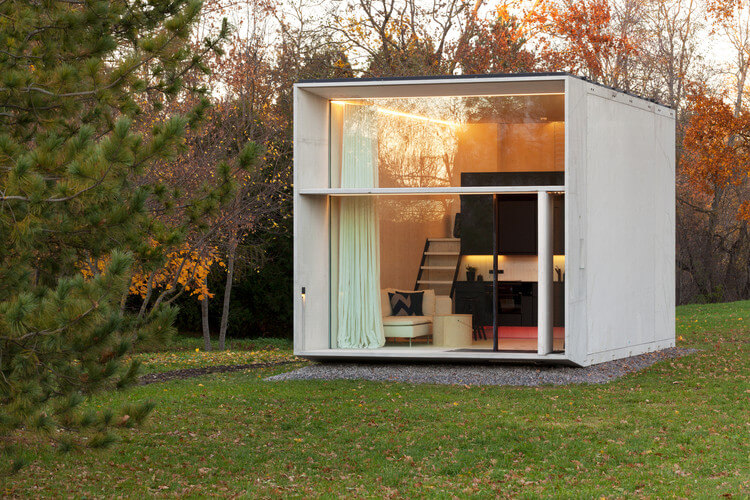When it comes to property, most of us aspire toward something big. Take a look at the ‘dream’ property shows on television, and most of them focus heavily on the enormous end of the market. Everyone, it seems, wants to live in a nine-bedroom mansion, complete with a swimming pool, a tennis court, and a separate wing to keep the servants.
Except this desire isn’t quite universal. Some of us, in fact, have the opposite tendency: these people prefer to live in the smallest space possible. This is a movement whose roots go back at least to the 19th-century essayist Henry David Thoreau, who famously lived for two years in a remote woodland cabin, and reflected on his experience in his book, Walden. It’s causing waves in the modern property market, with Ross Clarke, founder of the Minor Homes in Dorset, calling it ‘pretty close to a social movement’.
The benefits of living in a tiny home
So, exactly what is so appealing about living in a smaller space?
For one thing, small homes tend to be cheaper home. You can more easily get a foot on the property ladder, and pay off your mortgage more quickly. They’re also cheaper to run, with less space to heat. You can therefore be fairly sure that your carbon emissions are going to be smaller.
How big are tiny homes?
There’s no precise definition of ‘tiny’ when it comes to property. A good benchmark is 400 square feet: anything less than this is typically considered a tiny home. In some cases, the space can get much, much smaller.
What are tiny homes made from?
A tiny home can be adapted from existing materials. Shipping containers make popular solutions, since they come ready made, and cost just a few thousand pounds. Purpose-built cabins can be designed with eco-friendliness in mind, while houseboats and van conversions have the advantage of being mobile.
Planning and designing your tiny home?
If the idea of downsizing your living space and supercharging your savings account appeals, then you might already be planning your dream tiny home. There are a few points to bear in mind.
First, you’ll need to be as efficient as possible when it comes to storage. This tends to mean making use of awkward spaces. Having a bespoke storage solution over your bed, for example, can free up valuable room elsewhere.
Your layout is something that you should put considerable thought into. Get everything to do double duty, with desks, entertainment and meditation spaces stacked on top of one another. Draw up a floor plan and get a professional to look at it.
Additionally, opting for solar power for your tiny home aligns with eco-conscious living and provides a long-term solution for energy independence. Solar panels for homes have become increasingly efficient and cost-effective, offering an eco-friendly way to meet your energy needs. With advancements in solar technology, it’s now easier than ever to integrate solar power systems into the design of your tiny home, ensuring a greener and more self-sufficient lifestyle.
Once you’ve got your design sorted, it’s time to think about the materials you’ll need, and the labour required to put it all together. Get several quotes for everything, and get a rough estimate of how long it will all take.

